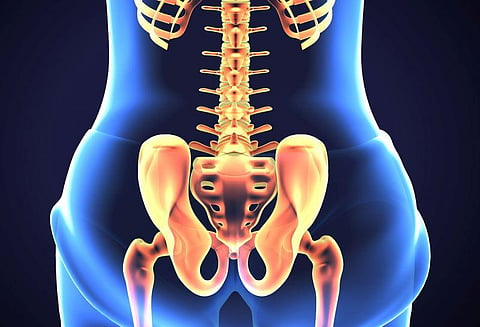THURSDAY, Dec. 30, 2021 (HealthDay News) -- Optimal acetabular positioning differs significantly from historic values, with reduced dislocation risk for increased anteversion, according to a study published online Dec. 27 in the Journal of Bone & Joint Surgery.
Noting that an acetabular '"safe zone" was proposed more than 40 years ago to avoid dislocation after total hip arthroplasty (THA), Mario Hevesi, M.D., Ph.D., from the Mayo Clinic in Rochester, Minnesota, and colleagues reviewed 9,907 THAs in 8,081 patients from 2000 to 2017 to determine optimal acetabular cup positioning during THA and the effect of the surgical approach on the topography of the acetabular safe zone and dislocation risk.
During a mean of five years of follow-up, 316 hips sustained a dislocation. The researchers found that the mean acetabular inclination and mean anteversion were 44 degrees and 32 degrees, respectively. The mean anteversion was 32 degrees for patients who did not sustain a dislocation; the historic ideal anteversion of 15 degrees was identified in the third percentile among nondislocating THAs. The lowest dislocation hazards were seen at an inclination of 37 degrees and an anteversion of 27 degrees in multivariable modeling; the ideal safe zone was 27 to 47 degrees of inclination and 18 to 38 degrees of anteversion. A similar safe zone location was demonstrated in a three-dimensional analysis; among surgical approaches and sexes, safe-zone topography differed significantly.
"These findings are clinically relevant in that they guide acetabular positioning and, in doing so, may mitigate dislocation risk in a readily implemented manner," the authors write.
Abstract/Full Text (subscription or payment may be required)


